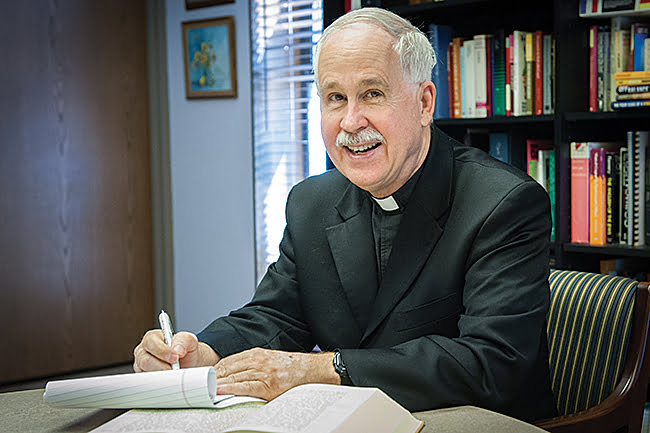
by Father Mike Stubbs
Halfway through Mass, after the intercessions (those prayers of the faithful when the congregation responds, “Lord, hear our prayer”), we experience a break in the action.
The readings from the Bible have been proclaimed. The homily has been preached. On Sundays, our parishes take advantage of this moment to pass the collection basket before moving on to the second half of the Mass, the Liturgy of the Eucharist.
How did this two-part structure of the Mass originate?
We see an answer to this question in Sunday’s first reading, Acts 2:42-47. It describes the life of the early Christian community in Jerusalem, sometime before the year 70 when that city was destroyed:
“They devoted themselves to the teaching of the apostles and to the communal life, to the breaking of bread and to the prayers. . . . . Every day they devoted themselves to meeting together in the temple area and to breaking bread in their homes.”
When the Christians go to the temple area, they join with their fellow Jews in their prayers, which would consist primarily of readings from the Scriptures.
This would correspond to our Liturgy of the Word, the first half of the Mass.
Afterwards, the Christians would gather in one of their homes for the breaking of the bread, the Liturgy of the Eucharist.
“The breaking of the bread” served as the oldest term for this most central action of our faith. It survives among us insofar as the priest always breaks the large host shortly before receiving Communion at Mass.
In the early church, this action would have reflected a practical necessity. Instead of many small wafers, there would have been only one large loaf for the congregation. For them to receive Communion, the priest needed to break it into pieces.
But this was not only a practical measure. It reminded everyone of Jesus’ action at the Last Supper, when he “took bread, said the blessing, broke it and gave it to his disciples.”
The one loaf also reflected the unity of the church, a unity nourished by this sacrament:
“Because the loaf of bread is one, we, though many, are one body, for we all partake of the one loaf” (1 Cor 10:17).
Certainly, the early Christian community in Jerusalem gave evidence of this unity by their concern for one another: “All who believed were together and had all things in common; they would sell their property and possessions and divide them among all according to each one’s need.”
It is no accident that the words “community” and “communion” sound similar. They are definitely related.

